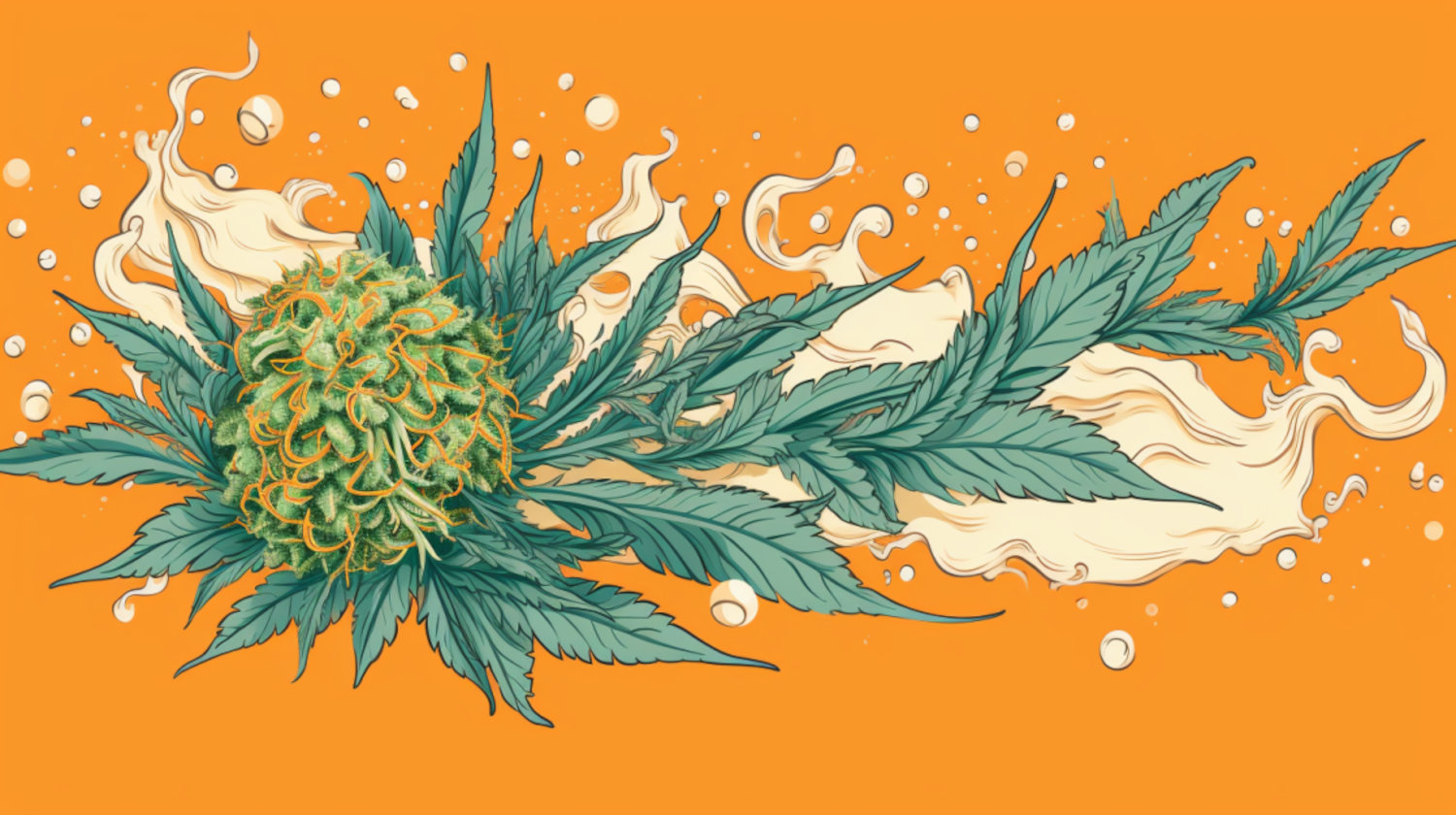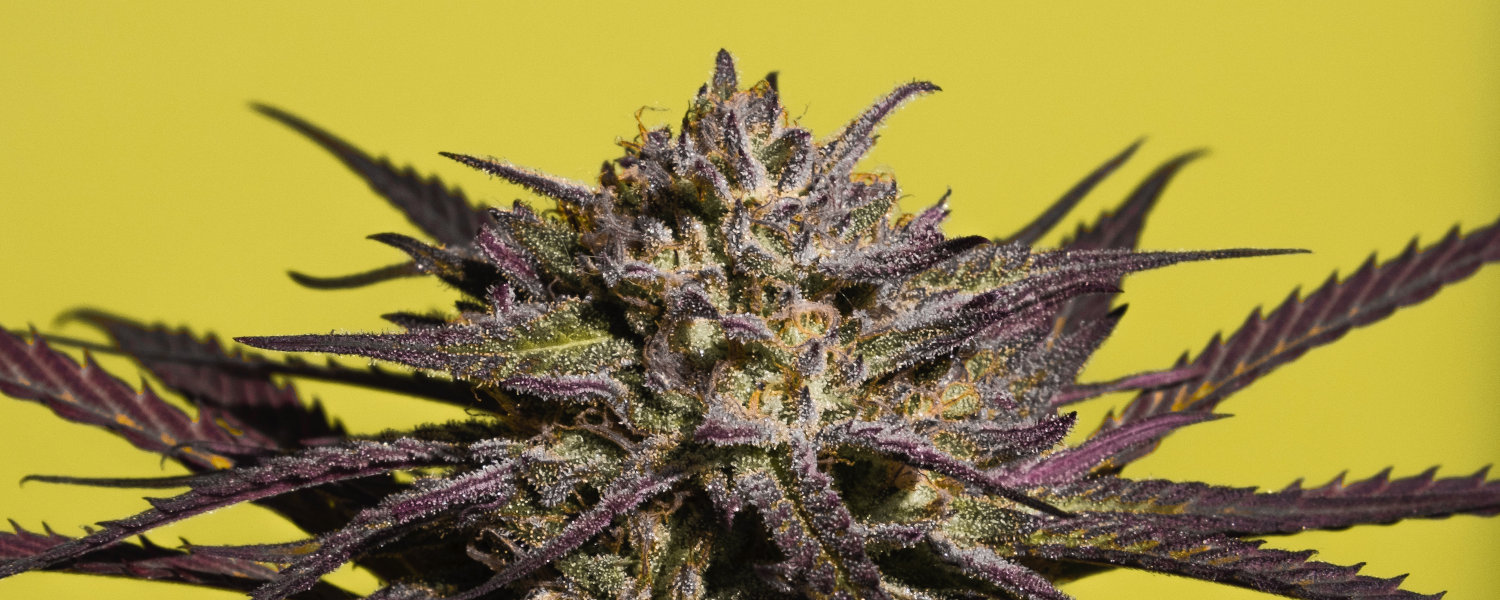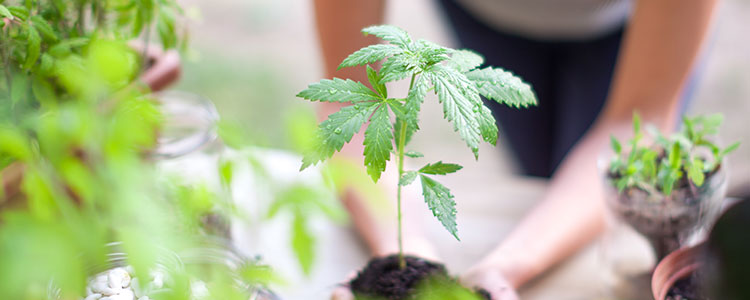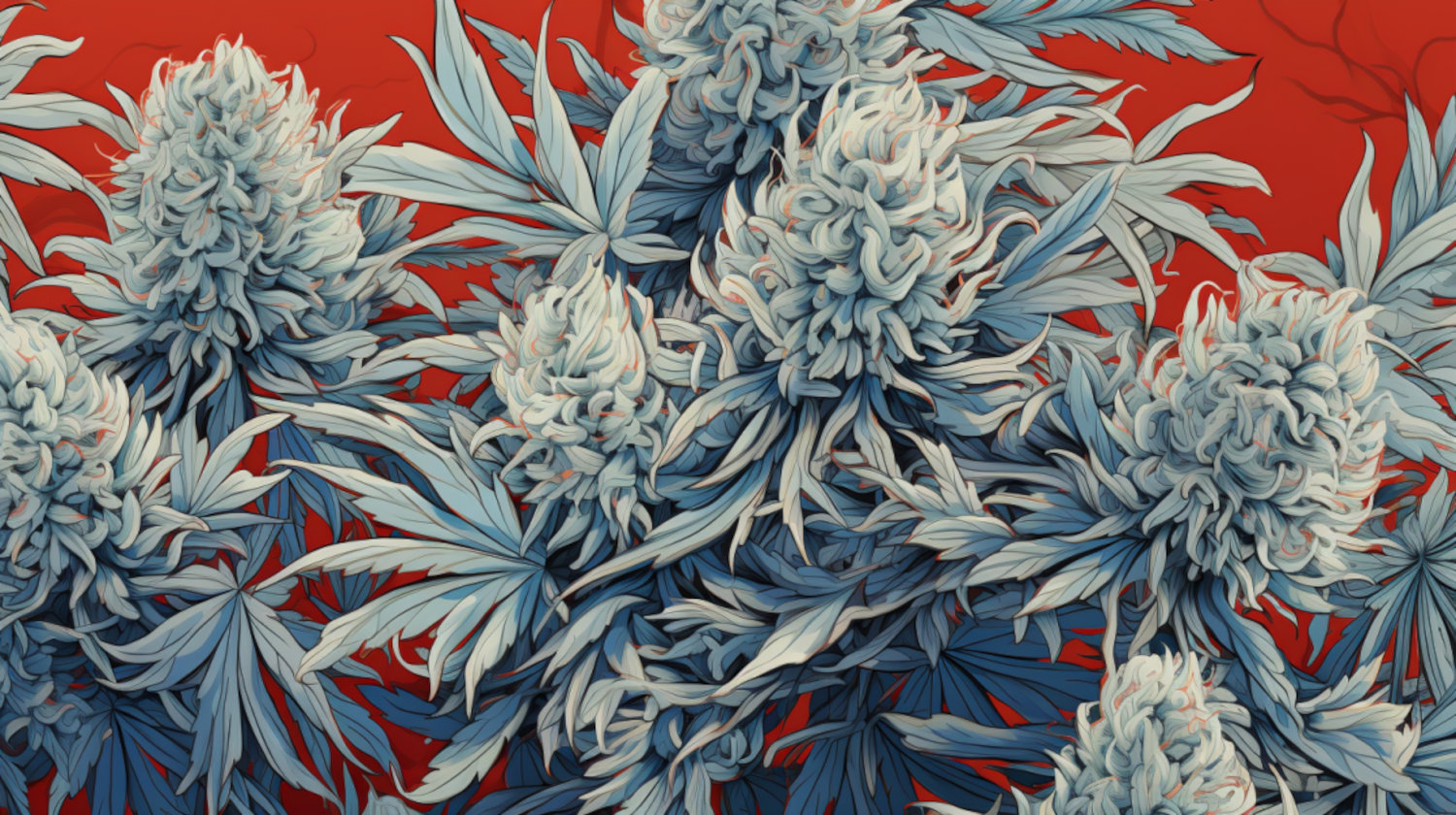When you think of a cannabis plant in your mind’s eye, what do you see? Of course, the fan leaves swaying in the breeze, the lush green of the buds, but what else? What about those orange hairs?
If you’ve ever had the pleasure of trying different cannabis strains, you’ll know that they come in an array of shapes, colors, and sizes. However, one common and captivating thing shared by many is these enigmatic orange hairs.
What is up with those little things? What purpose do they serve? Do they indicate higher potency, as some say? Have you ever asked: Why is my weed orange?
The Anatomy of a Bud
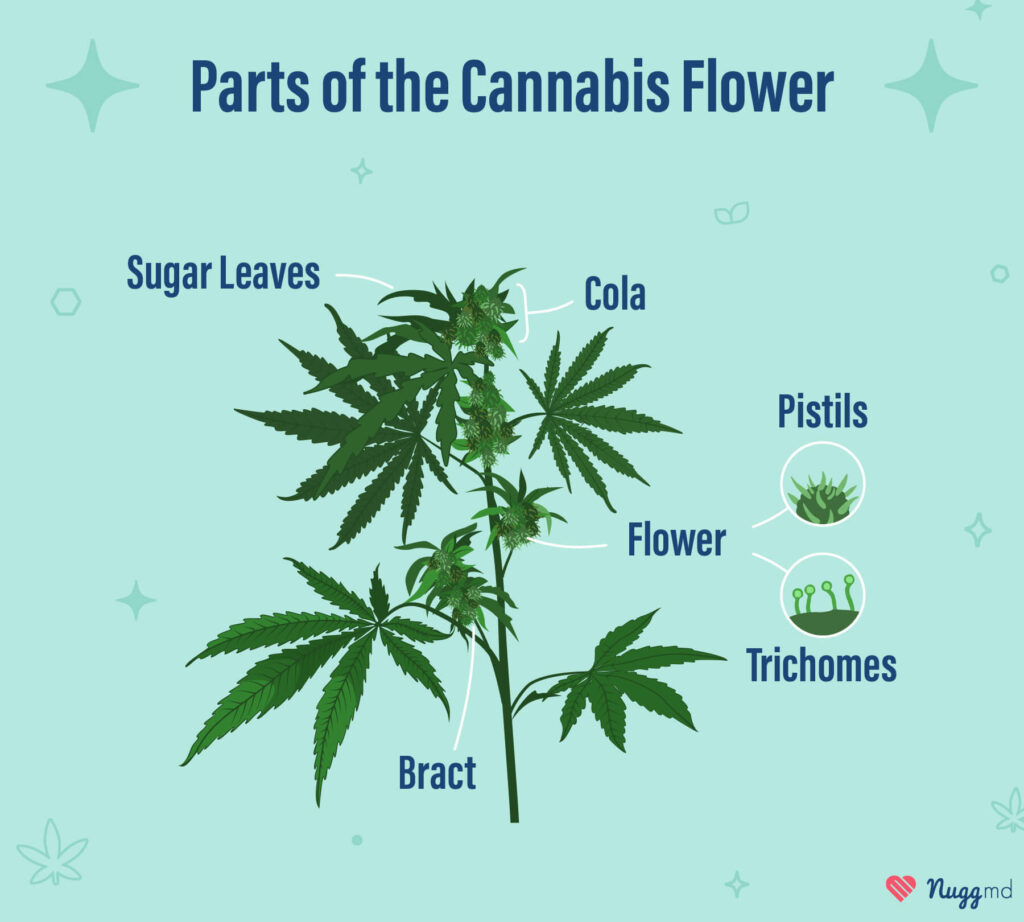
Let's start with more context about the anatomy of the bud itself. Cannabis plants are remarkable in their complexity, but it’s the buds that people are ultimately interested in.1
At the core of the cannabis bud lies the cola, which is the flowering portion at the top of the plant. Colas consist of many small floral clusters adorned with trichomes, hair-like appendages containing cannabinoids and terpenes.
But the trichomes are not the orange hairs you’ll find on your cannabis. Instead, these are the pistils or stigmas of the plant.
In precise botanical terms, a pistil combines an ovary, a style, and a stigma. More informally, “pistil” is often used to describe the fused style and stigma, collectively serving as the flower's female reproductive organs.
Stigmas, often mistakenly referred to as pistils, are the pollen catchers of the cannabis female flower. Each stigma consists of two delicate structures connected to an ovule, which holds the potential to become a seed.
However, as the cannabis flower matures, the pistils begin to transform. They grow longer and start to exhibit their distinct orange hues. They may even begin to curl and shift toward reddish-brown tones. These changes signify the approaching peak of reproductive ripeness for the cannabis plant.2
What Do the Orange Hairs on Weed Do?
So, now that we’ve covered what the orange hairs are, what exactly do they do?
Orange hairs are not just there for visual appeal; they serve crucial functions in the cannabis plant life cycle.
Pistils’ primary role lies in reproduction. Just as flowers attract pollinators with their vibrant colors and alluring scents, cannabis pistils are nature’s invitation to ensure the plant’s survival. These structures play a pivotal role in fertilization by serving as pollen-catching antennae. They intercept pollen from male cannabis plants (often carried by the wind), capturing the male gametes necessary for fertilization as they do so.
When a pollen grain lands on a stigma, it begins its journey down the style, leading to the ovary, where fertilization takes place, setting the creation of seeds in motion.
Wait a minute – seeds? If you’re a cannabis cultivator, you likely don’t want your plant to produce seeds (except in specific circumstances). So, are orange hairs a good sign or a cause for concern?
It’s important to remember that these structures are an integral part of the cannabis plant’s reproductive cycle. If the pistils on your cannabis are turning orange, the plants are mature and likely ready for harvest.
So long as you remove the male plants from the females, the female plants, with or without these orange hairs, will not produce seeds unless under high stress.
Orange Hairs on Weed: Flavor and Potency
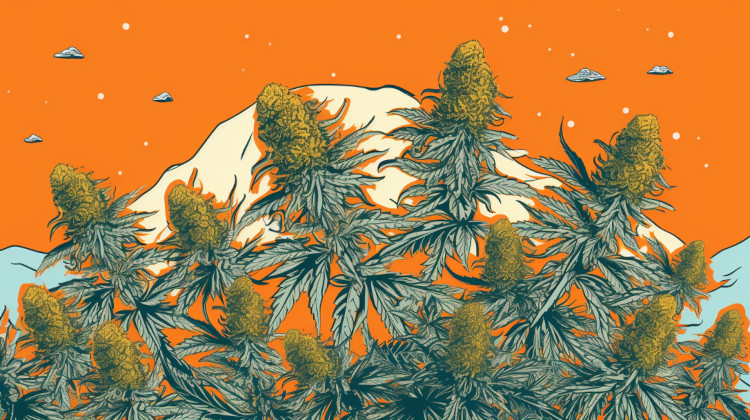
It should come as no surprise that enthusiasts and novices alike are curious about the potential impacts of orange hairs on flavor and potency. But, despite popular belief, the color of those orange hairs doesn’t directly influence these things.
The orange hairs are linked to the plant’s reproductive processes. As the plant matures, the pistils transition from white to orange, signaling the optimal pollination and seed production time. Thus, this transition is not an indicator of flavor or potency but a marker of the plant’s life cycle.
The compounds responsible for flavor (terpenes) and potency (cannabinoids like THC) are primarily found in the trichomes—those tiny, glistening structures that cover the plant. These trichomes, not the orange hairs, are responsible for the distinctive aroma and effects of different cannabis strains.
What Do the Orange Hairs on Weed Mean for Growers?
First and foremost, orange hairs on cannabis are an indicator that your plants are near or ready for harvesting. As the cannabis flower matures, the pistils start to change. They grow longer, swell, and darken slightly, and their tips may curl and turn reddish-brown. This transformation signifies that the plant is approaching its optimal harvest window.
However, while the color provides essential cues, remember that assessing your plants’ growth should involve an examination of the trichomes. These trichomes are the true treasure troves of cannabinoids and terpenes, which define the plant’s potency and flavor profile.
Researchers have found that these trichomes are most active when they appear translucent and mature. As they age, they turn yellow, and older trichomes become brown. Above all, this color change within the trichomes provides growers with a reliable method to determine the plants’ readiness for harvest.3
Can growers influence how abundant these orange hairs are within their plants? While genetics play a significant role in determining the presence and quantity of pistils, cultivation practices can also impact this.
Creating an optimal growing environment, including proper lighting, nutrition, and ventilation, can contribute to healthy and vigorous flower development, of which many orange hairs can be a part.
Common Myths
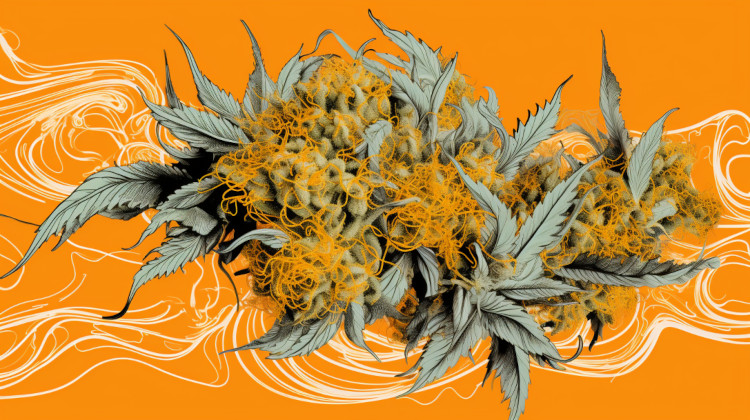
There are many myths and misunderstandings about cannabis that can make it challenging to know what is true and what is mere urban legend.
Myth: Orange hairs contain THC
One of the prevailing misconceptions is that the orange hairs themselves contain THC. While these hairs, or pistils, are indeed part of the cannabis flower, they are not sources of THC. Compounds like THC and CBD are concentrated in the cannabinoid-rich trichomes, which cover the surface of the buds.
Myth: Exclusive to Sativa Cultivars
Another common myth is that orange hair is exclusive to sativa-labled cultivars. However, this is not accurate. Orange hairs can be found on various cannabis cultivars. The presence of these hairs is determined by the plant’s genetics and developmental stage.
Myth: Indicators of Potency
Another misconception is that the color of the pistils indicates the potency of the strain. While pistils changing color from white to orange can signal the optimal time for harvest, it doesn’t correlate with the potency of the cannabis. Potency is primarily determined by the concentration of cannabinoids and terpenes within the trichomes.
Myth: Influence on Flavor
Finally, some believe that the color and presence of orange hairs influence the flavor of the cannabis cultivar. However, the cultivar’s genetic profile and the concentrations of terpenes and other volatile organic compounds (VOCs) are most influential on the flavor of the strain. While the pistils are an important part of the plant’s reproductive journey, they don’t play a direct role in shaping the taste.
References
- Atakan Z. Cannabis, a complex plant: different compounds and different effects on individuals. Therapeutic Advances in Psychopharmacology. 2012;2(6):241-254. doi:https://doi.org/10.1177/2045125312457586
↩︎ - Clarke RC. Marijuana Botany : An Advanced Study: The Propagation and Breeding of Distinctive Cannabis. Ronin Publishing; 1981.
↩︎ - Mahlberg PG, Kim ES. Accumulation of Cannabinoids in Glandular Trichomes ofCannabis(Cannabaceae). Journal of Industrial Hemp. 2004;9(1):15-36. doi:https://doi.org/10.1300/j237v09n01_04
↩︎
The information in this article and any included images or charts are for educational purposes only. This information is neither a substitute for, nor does it replace, professional legal advice or medical advice, diagnosis, or treatment. If you have any concerns or questions about laws, regulations, or your health, you should always consult with an attorney, physician or other licensed professional.

